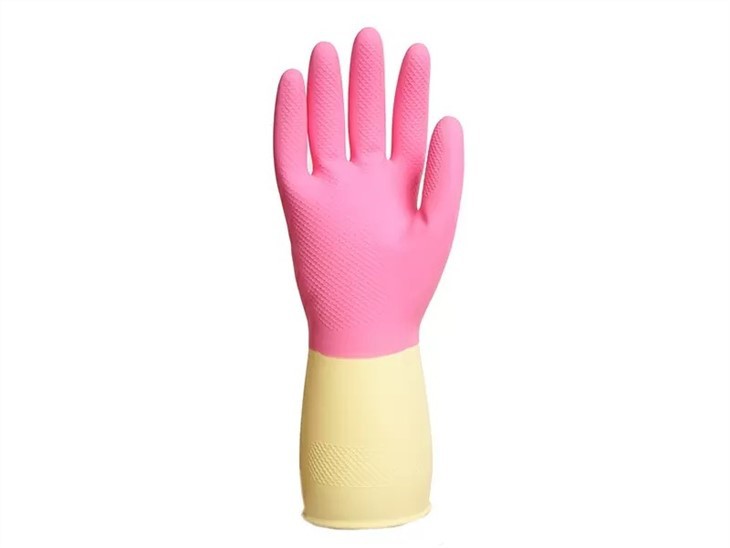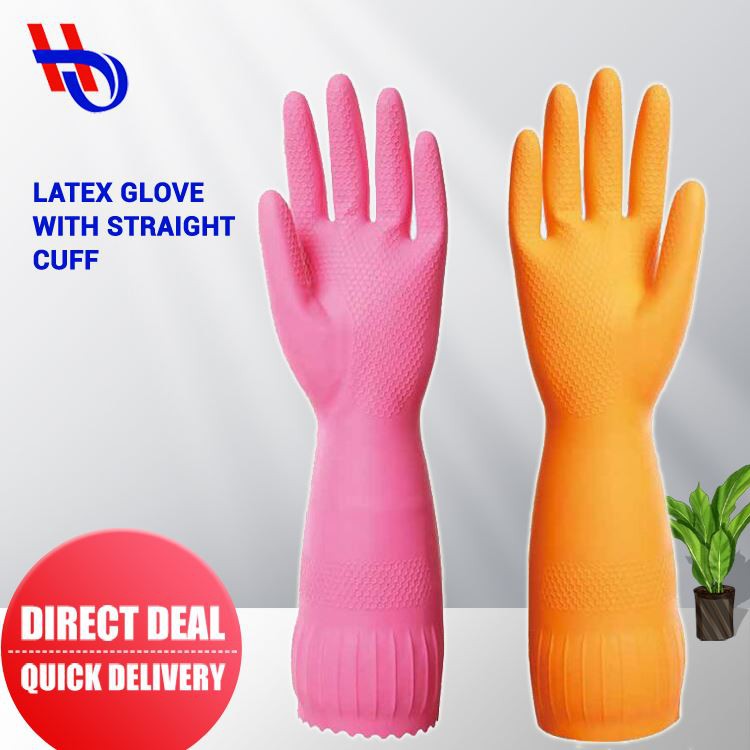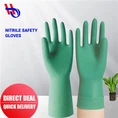Latex Exam Gloves
What is Latex Exam Gloves
Are gloves made from latex. They're most commonly used in hospitals and similar environments, but can also be found in a range of different environments, including garages and food service.This extra dexterity is vital in situations involving delicate procedures like surgery, as it gives the surgeon the control they need to correctly carry out the procedure.The elasticity of latex has another benefit. Because the fit of latex gloves is so tight, it helps prevent materials and liquids from getting underneath the glove. This is ideal for situations involving risks of contamination.
Advantages of Latex Exam Gloves
Different thicknesses
At safety gloves, we have latex gloves that come in a range of different thicknesses, which is one of the reasons that they can be used for so many different applications. Thinner latex gloves are ideal for general medical examination uses, while thicker ones are great for dealing with industrial-strength cleaners as they offer resistance to the strong chemicals, keeping your hands protected.
Affordability
Because so many people use latex gloves and latex is used in such a wide range of products, latex gloves are incredibly affordable. This makes them the ideal choice for anyone who needs some disposable gloves for whatever need. At safety gloves, we strive to make our pricing as competitive as possible, ensuring that you can find the gloves that you need without breaking the bank.
Comfort
Latex gloves are incredibly comfortable to wear for long periods of time. This makes them fantastic for use in surgery and laboratories where gloves are likely to be worn for a long time, as it enables the wearers to competently and efficiently do their work without feeling uncomfortable or making any mistakes, which in high-danger situations like surgery or laboratories is vital.
Tear & rip resistant
While latex gloves can be cut with a surgical instrument, it is incredibly difficult to accidentally tear or rip them. This is fantastic for use with chemicals or while examining patients as it seriously reduces the risk of contamination or cross-contamination.
Why Choose US
Our factory
Beijing Huateng Rubber and Plastic Latex Products Co., Ltd. was established in 1958. The company has excellent performance in China's latex impregnation products. The registered capital of the Company is 120 million yuan, and the value of fixed assets is 258 million yuan. The annual turnover exceeds 800 million yuan.
Our Product
We mainly develop nitrile protective gloves and neoprene protective gloves. At the same time, our company provides different kinds of work gloves, protective gloves and waterproof boots to the domestic and foreign markets.
Our certificate
The company has passed ISO9001: 2015 quality management system and ISO14001 environmental management system certification. Latex gloves have passed EU CE certification
Production equipment
It has strong scientific research and development ability and technical testing means, and the factory has complete industrial sanitation, labor protection and fire protection facilities that meet the environmental protection standards.
Powerful industrial production utilities
Power supply capacity is 4250KVA, and water supply capacity is 240t/h circulating water capacity. 300t/h, heating capacity 32t/h, the water supply and drainage facilities in the plant area are complete and connected with the municipal pipe network.

Choosing the Right Latex Gloves
Choosing the right latex gloves is essential to ensure safety, comfort and efficiency in various industries. Whether you are working in healthcare or cleaning, having the right gloves can enhance your work productivity.
Powdered vs powder-free
Powdered latex gloves are easier to put on. However powder-free gloves are better for industries where the powder could cause contamination. As well as this, powder-free gloves reduce the risk of you having a reaction to the powder.
Thickness and durability
Thicker gloves provide more protection but may reduce your tactile sensitivity. You should choose thicker gloves for heavy-duty tasks and thinner latex gloves for precision work.
Size and fit
Your gloves should snuggly fit your hand to ensure dexterity and comfort. If your gloves are too tight it can cause hand fatigue, on the other hand gloves that fit too loose can reduce your control and cause accidents.
Allergies
It is important to be aware of any latex allergies your employees have. Nitrile and vinyl gloves are a good substitute for people with latex sensitivities.
Textured vs. Smooth
Textured gloves provide better grip, this is important if you are handling tools and equipment. Whereas, smooth latex gloves are ideal for tasks that require a high level of tactile sensitivity.
Sterile vs. Non-sterile
You will want to purchase sterile gloves if they are for medical use. For general tasks, non-sterile gloves are a great option. Always check the packaging to ensure you are using the correct type for your application.
What Are Latex Exam Gloves Used For
The materials behind latex gloves are naturally occurring. In fact, while dip-molded latex might lead you to believe these are purely synthetic gloves, latex is actually a naturally occurring plant material.
Basically, latex is any polymer in a water-based or viscous form. Natural latex, or natural rubber latex, is derived from the rubber plant hevea brasiliensis and is a complex emulsion of proteins, sugars, oils, starches, tannins, alkaloids, resins, and gums that coagulate when exposed to the air.
We transition from the rubber plant to commercial latex by taking fresh latex and transforming it through a process of blending, coagulation, and drying.
Latex gloves have long been popular power players among disposable gloves, whether they're powdered latex gloves or powder-free gloves. These days, workplaces are more conscious of latex allergies.
Even so, latex remains a popular glove material for its comfort, stretchiness, and tactile sensitivity. This makes latex a popular compound among a specific population: The medical industry.
In terms of medical gloves--especially surgical gloves--few materials can match the dexterity and tactile sensitivity of a latex glove. This is incredibly important for work requiring extreme precision, such as surgery. That said, even regular physicians remain frequent users of latex gloves. Even a regular physical exam needs tactile sensitivity, and on that front, latex gloves are hard to beat.
Latex is also quite popular among workers who need frequent glove changes, whether that's the healthcare industry or elsewhere. In many cases, you would need powdered gloves to provide the same comfort level as latex powder-free gloves.
For this reason, latex is also popular among laboratory workers. It does quite well with most biological agents, though natural rubber does not perform well around certain solvents.
Latex gloves are made of Natural rubber, natural origin material (from rubber tree), while Vinyl gloves are produced with raw Synthetic materials (mainly PVC - Poly Vinyl Chloride-and-Phthalates DINP plasticizers that makes plastics soft and pliable ).
Latex gloves have superior resistance to tear, puncture and are also more waterproof because it is easier to control the level of microholes, therefore safer for risk jobs eg with biological material.
Vinyl gloves, being devoid of natural proteins, can also be used by people allergic to latex proteins. They are also less expensive, but can ensure a level of safety if the thickness of the product is adequate.
Latex gloves are biodegradable while Vinyl gloves are not, and must be disposed carefully as the PVC if disposed incorrectly may create dioxin.


Surgical: Surgeons and medical professionals use gloves to maintain a sterile environment and prevent infections spreading.
Dental: As a dentist you will use gloves to protect your hands against bacteria and contaminants during dental procedures.
Laboratory: Researchers and lab technicians use gloves to handle chemicals and equipment safely.
Food Preparation: If you are handling food, gloves ensure your hands stay clean and germ free. As well as this, it also helps reduce cross contamination.
Automotive: Mechanics use gloves to protect themselves from oils and hazardous material that can be found in automotive work.
Cleaning: Janitors and cleaners wear gloves to protect their skin from harsh cleaning chemicals and to maintain hygiene.
Tattooing: As a tattoo artist you should wear gloves to ensure you maintain a sterile environment. Also, they provide a protective barrier for both you and your client.
How to Measure Your Hand for Gloves
Finding the perfect sized disposable glove is important to ensure comfort and protection during your day to day tasks. Whether you are in the medical field or food industry, the right glove size can make a difference to your safety and performance.
To measure the width of your hand, you should place a ruler across the palm of your hand. Measure the widest part of your hand excluding your thumb.
It is important to keep in mind that there can be a ±10mm discrepancy for each size. If you are in between sizes it is always best to size up.
|
Glove Size |
Hand Width in MM |
Hand Width in CM |
|
Extra Small |
70 mm |
7 cm |
|
Small |
80 mm |
8 cm |
|
Medium |
95 mm |
9.5 cm |
|
Larage |
110 mm |
11 cm |
|
Extra Large |
> 110 mm |
> 11 cm |
Most gloves come in a standard length of 240mm. However, some do have different lengths and it is important to measure this correctly.
Use a ruler to measure from the bottom of your palm to the top of your middle finger. If the gloves have different lengths ensure you use this measurement to find the correct size.
Gloves that are the right length provide full coverage of your hand and wrist. This can protect you from any chemicals or hazards.
Precautions for Daily Use of Latex Gloves
★Avoid contact with chemicals such as acid, alkali, organic solvents;
Choose the powder-free and low-protein gloves when handling infectious materials in order to reduce the risk of allergies;
Do not use oil-based hand creams or lotions when wearing latex gloves, as they will cause damage to the gloves;
★Wash your hands with mild soap and dry them completely after taking off latex gloves;
Disposable latex gloves should not be worn repeatedly(because they may have lost the property of defend against harmful substances).
There are three different conditions that people may experience when wearing latex gloves and the followings are their prevention and treatments.
Affective touch dermatitis: This condition is mostly common and usually manifests itself as red, itchy, dry and cracked skin in the hands. It is caused by washing hands excessively with soap or detergent while not drying the thoroughly, resulting in the gloves impermeable.
Prevention and treatments: Be sure to rinse off the detergent and dry your hands before wearing gloves; and if it were dry gloves, then there should not be too much talcum powder inside the gloves. Once the symptoms of affective dermatitis appear, do not scratch and apply antipruritics.
Allergic touch dermatitis: It is characterized by itchy, dry and cracked skin on the hands and often with red spots 6-48 hours after contact with latex gloves. This is a delayed allergy caused by certain chemical components of the gloves or attached to the gloves.
Prevention and treatments: Change another type of gloves or stop use gloves to prevent severe allergic reactions. In case of allergic touch dermatitis, antihistamines taken orally and compound dex applied to hands are required.
Latex allergic reaction: It is extremely rare. Usually within a few minutes to ten minutes of putting on the gloves that patients' skin would be red and itchy quickly, often accompanied by reed rash, rhinitis, conjunctivitis, chest intrusion, palpitations, etc.. Severe cases even can present breathing difficulties, tachycardia, blood pressure drop, and even anaphylaxis, sudden death, etc.
Prevention and treatments: Take off the gloves quickly, flush your hands repeatedly with smelling saline, and go to the hospital immediately. Anyone who has an allergic reaction to latex should be prevented from touching latex gloves and other latex products again.
Gloves are divided into cotton yarn, plush, leather, etc. according to materials. The material commonly used to make gloves is fiber.
Lining --- Heat resistant PVC
Plastic point --- The best anti-skid scheme
PU or latex coating --- Applicable to oily or greasy environment.
Several commonly used glove materials:
●Metal wire - Common stainless steel wire, as well as chrome alloy wire, is mainly used to make anti cutting gloves. This kind of material has the strongest cutting resistance and is easy to clean, but it is heavy and inconvenient to use.
●Kevlar- Spectra and other synthetic yarns are also good synthetic fiber cutting resistant materials. Although their cutting resistance is not as good as metal wires, they are light and comfortable to use. After improvement and treatment, some products can also reach the highest level of cutting resistant product standards.
●Nitrile (with fabric lining) - It has wear resistance and puncture resistance, and is flexible and comfortable to use.
●Natural latex (with fabric lining) - Good elasticity, especially flexibility, and certain wear resistance, tear resistance and cutting resistance.
●PVC (with fabric lining) - It can provide a certain degree of wear and puncture protection. If the material is thick, it can also have a certain cutting resistance, but not tear resistance.
●Leather - Natural material with unique properties through various tanning treatments. Leather can be divided into: cow leather, which has the advantages of comfort, durability, breathability and wear resistance. It is more durable after chrome treatment, and can resist high temperatures; Pigskin, with large pores and the best air permeability, can still maintain good softness without hardening after washing; Sheepskin is the most comfortable, durable and wear-resistant. However, due to its high price, it is generally only used in industries that require high touch.
Disinfection and Treatment of Latex Gloves
Wearing medical latex gloves has become a part of our life. The following describes the disinfection and treatment of latex gloves:
Disinfection treatment of medical latex gloves
The used gloves should be taken off immediately and soaked in the disinfectant for 30 minutes. When soaking, the front of the gloves should be turned over. Because the reverse side is often outside when taking off the gloves, it can not decontaminate and sterilize. Because the gloves are light, they generally float on the liquid surface. When soaking, the gloves should be fully immersed in the disinfectant by pressing down with objects.
Storage of medical latex gloves
After the soaked gloves are cleaned and dried, check whether they are damaged. If they are damaged, they cannot be used again. Check whether the size of the hands is consistent. In addition, put the talcum powder into the glove bag, and store them in the sterile room after sterilization. There are disposable medical sterilized latex gloves on the medical market, and the shell is wrapped with paper. After use, such gloves also need to be disinfected and treated as medical waste, which cannot be discarded randomly.
FAQ
We're well-known as one of the leading latex exam gloves manufacturers and suppliers in China. Please feel free to wholesale high quality latex exam gloves at competitive price from our factory. For OEM service, contact us now.
Latex Exam Gloves, Electrical Insulating Gloves, Latex Industrial Gloves








